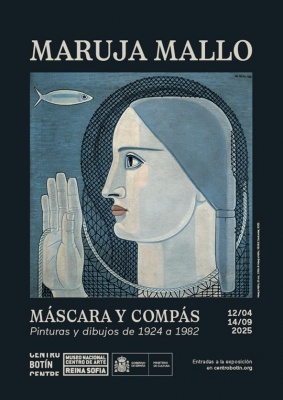Organizaciones con obra
Profesionales con obra
Descripción del Artista
Martin was born in 1912 in Saskatchewan, Canada. She moved to the United States in 1932 and became a U.S. citizen in 1950. In the 1940s and early ’50s, Martin lived and studied periodically in the northwestern United States, New Mexico, and New York City.
She obtained degrees from Teachers College, Columbia University. In 1957 she settled in Coenties Slip in lower Manhattan alongside fellow artists Robert Indiana, Ellsworth Kelly, James Rosenquist, Lenore Tawney, and Jack Youngerman. She established her career as an artist, earning her first solo show at the Betty Parsons Gallery, New York, in 1958.
By the mid-1950s, Martin had supplanted the landscape and figurative watercolors of her formative years, as well as the biomorphic oil paintings that followed, with experiments in different mediums. At this time she used found materials and produced large simplified abstractions. Her paintings of the 1960s, which are distinguished by square formats, grids, penciled lines drawn on canvas, and compositions with subtle variations in shade and hue, marked a crossroads in the history of abstraction. With her gentle inscriptions of penciled lines on subdued fields of wash and color, Martin established a geometric and spatial language that she would refine and reinterpret over ensuing decades. Despite her restrained style—and unlike the rigidly formulaic work of the Minimalists—Martin maintained a deep conviction in the emotive and expressive power of art and decidedly handcrafted, delicate surfaces.
Martin left the New York art scene and abandoned painting in 1967 amid growing interest in her work. In search of solitude and silence, she traveled across the United States and Canada for almost two years before finally settling in New Mexico, where she lived the rest of her life. After a hiatus of several years, Martin published On a Clear Day (1973), a portfolio of 30 screenprints of differently proportioned grids and parallel lines. She began painting again in 1974, turning to stripes as a primary compositional format while continuing to explore and refine her spare style. She continued working in this manner until the final years of her life, when she reintroduced bold geometric forms into her paintings.
Martin often chose titles that suggest a preoccupation with the natural world, such as White Stone (1964) and White Flower, and throughout her career she maintained a particular interest in using art to evoke the experience of nature. She was steadfast in her denial of any representative elements in her work, however, and said about her subject: “It’s really about the feeling of beauty and freedom that you experience in landscape. My response to nature is really a response to beauty. The water looks beautiful, the trees look beautiful, even the dust looks beautiful. It is beauty that really calls.”
Martin was honored with the Skowhegan Medal of Painting and Sculpture (1987), Oskar Kokoschka Prize (1992), Golden Lion at the Venice Biennale (1997), National Medal of Arts (1998), and Lifetime Achievement Award from the Women’s Caucus for Art (2005), among other awards.

Exposición. 12 abr de 2025 - 14 sep de 2025 / Centro Botín / Santander, Cantabria, España
Maruja Mallo: Máscara y compás. Pinturas y dibujos de 1924 a 1982

Formación. 08 may de 2025 - 17 may de 2025 / Museo Nacional Centro de Arte Reina Sofía (MNCARS) / Madrid, España